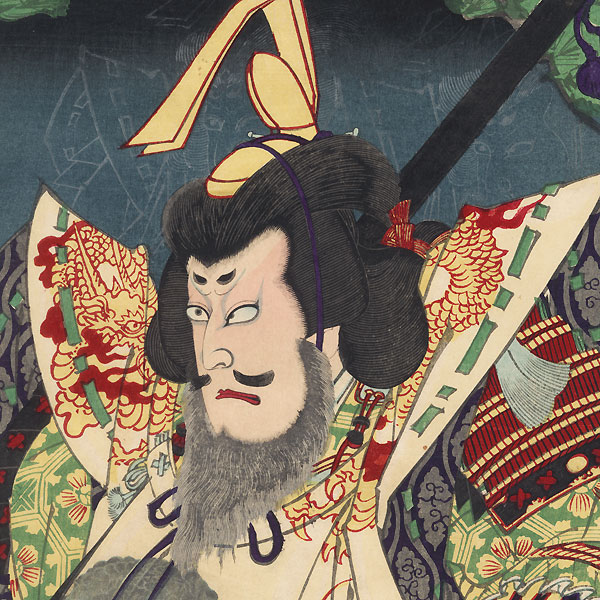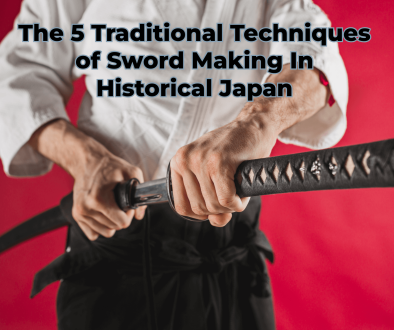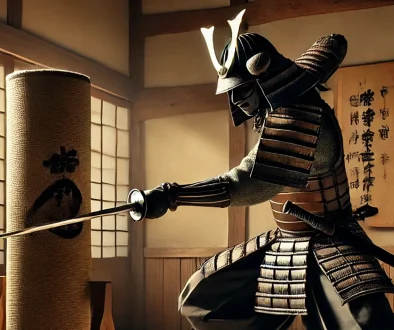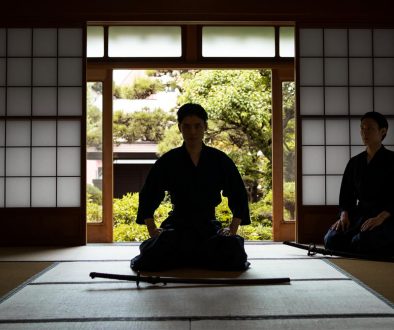The First Samurai of Japan
This biography of Taira no Masakado also known as the first samurai covers the earliest years of the Heian era and his role as governor of Shimosa. During this period, the kokushi (officials) in the Kanto region began to squeeze farmers by increasing taxes and forcing them to fight on the verges. This revolt prompted Masakado to step in and help the farmers of Kanto recover after Mount Fuji’s eruption. During this time, he was also credited with the invention of the curved Japanese sword that was better suited to killing enemies while riding a horse. His lands were rich in metal, and he used these to manufacture the swords that we use today.
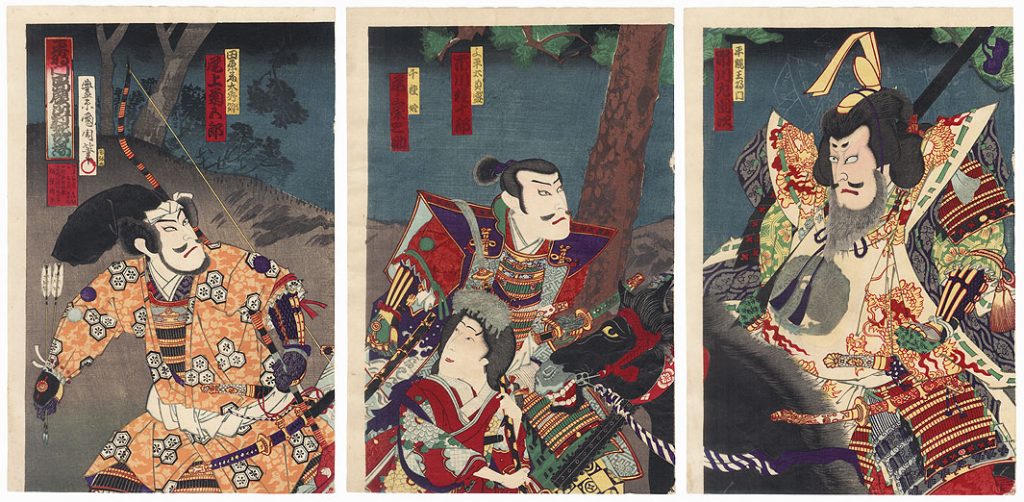
A samurai of the Heian period
Taira no Masakado was an important samurai of the Heiankun period during the Heian era. The rebels’ war was known as the Tengyo no ran, a name that was given because it coincided with the birth of a new emperor and several other natural phenomena such as earthquakes and rainbows in the capital city. Tengyo no ran also caused pirate unrest in the western regions.

Taira no Masakado was an exceptional samurai. He belonged to the Taira clan and began a series of rebellions against Emperor Suzaku in 935. These rebellions led to the establishment of a new dynasty, but Taira no Masakado was defeated by the Emperor’s samurai troops in 936. His daughter was later painted by Utagawa Kuniyoshi as a witch summoning a gigantic skeleton monster.
Taira no Masakado was the son of Kanmu Taira clan. His father, Taira no Yoshimasa, was a provincial lord of the Kanto region. In 939, Taira no Masakado led a rebellion and conquered Kozuke and Shimotsuke provinces. His brother Taira no Kunika died and his body was later taken away to be buried in Edo. Taira no Masakado’s head lies on the Otemachi shrine, near Tokyo Station.
He was born into a wealthy family with an influential lineage, descended from Emperor Kanmu. His father was a respected warrior and served at the imperial court in Tokyo. Later, Masakado settled in Shimosa Province, northeast of modern-day Tokyo. During this time, inheritance laws were not clearly established, and Masakado’s uncles tried to seize his father’s land.
He conquered eight provinces
The samurai Taira no Masakado was born into a noble family, descended from the emperor Kanmu. While a child, he was privileged enough to study at the imperial court of Tokyo. Later, he moved to the province of Shimosa, northeast of modern-day Tokyo. Unfortunately for him, inheritance laws were not yet well established, so his uncles tried to steal his land.
During this time, Masakado also fought the Shinnin of Kyoto and took over the province of Shimonotsuke. In his subsequent wars with the Emperor, he fought against the shinno ninkoku – a province ruled by a governor. The Shinno’s territory was captured, and the shinno of this province fled into exile. By the year 937, Masakado conquered eight provinces, including Shimogamo and Ibaraki. During his reign, he fought the Emperor of Tian Qing II and was rewarded with the title of Tengyo.
He was put on display in Shibasaki
It is unknown what exactly happened when Taira no Masakado was killed. His head reportedly flew across the country and landed in the fishing village of Shibasaki, which would one day become the city of Edo. Villagers buried the head and later built a shrine to the god over his grave, called Kubizuka. The local peasants cherished the lord and revered him. But, it’s worth noting that his family feared his spirit would return, bringing disasters and diseases. As a result, they erected a shrine to him in Shibasaki, which is still in place today.
A court summons was issued against Taira no Masakado. He ignored the summons, raised a large army, and retaliated by storming the lands of his enemies, capturing eight provinces in the process. The court regarded him as a potential ruler, and therefore, condemned him as a traitor and rebel.
The Taira no Masakado was a powerful landowner in the Kanto region. His daughter Takiyasha-hime also has a place in Japanese folklore. She has also been featured in myths of the era, including the saga of Yokozuna, the mistress of the Tokugawa shogunate.
The New Emperor
Taira no Masakado was born into a rich family of warriors, descendants of the legendary Emperor Kanmu. Despite having a privileged childhood in the capital, he moved to a rural region of eastern Japan – Shimosa Province, to be exact – near present-day Tokyo. Then, when his father died, the inheritance laws were not set in stone, and his uncles tried to steal his father’s land. Ultimately, Masakado was killed by his cousin.
The death of Masakado only increased his influence. It was reported that the head flew across the country, landing on a remote fishing village that would later become Edo. The villagers found his head, buried it, and erected a shrine over it, naming it Kubizuka. It is believed that Masakado’s head is now buried on a plot of land worth millions of dollars.
After Taira no Masakado’s death, 14 people died in the finance ministry within two years. This was reported in the Yomiuri Newspaper. Hayashi Seiji’s death also came after a brief illness. Meanwhile, people working over the Masakado grave reportedly complained of foot pain. They attributed the pain to disrespect for Masakado.

His decapitated head was found in Shibasaki
Taira no Masakado’d head was found near Shibasaki, a small fishing village located near the modern city of Edo. The head was believed to have been thrown into the fire and flew to Shibasaki, where it landed on a small mound. The villagers cleaned it and buried it with full rituals. A heavy tombstone was placed over the head to prevent it from flying away.
The decapitated head of Taira no Masakado was once displayed in Kyoto. The head flew through the air, crashing into a tiny fishing village called Shibasaki. The head was buried in a shrine in the town. This small hamlet was subsequently made into a part of Otemachi, the banking district of Tokyo. His decapitated head was then revered as a protector of the city.

The motives behind this horrific event remain unclear. The decapitated head of Taira no Masakado was found in Shibasaki, Japan, in 940. His decapitated head was a prize he had won through several battles. The decapitated head was found in a village where he had lived.
The head of Taira no Masakado was found on a small hill in Shibasaki, which became the modern city of Tokyo. The shrine’s cemetery, known as “Dozuka”, is near the epicenter of the earthquake and the site of the headless body. The younger brother buried his headless body at the site. The headless torso grave is still there today.
Reflecting on the importance of his life
Taira no Masakado was a powerful landowner and political force in Shimosa province. He had enemies and friends and fought for a living as a landlord, livestock breeder, and land opener. Through these experiences, he developed his combat skills and military command. In addition, he established a seicho (government office) in Iwai City, which is in the Ibaraki Prefecture.
Although the Samurai’s lifestyle and role in society changed greatly over time, his legacy endures. He was an enemy of the Imperial Court in the early years of the Heian period, a gyakuzoku (traitor) rebel during the Meiji period, and a hero after the World Wars.
Taira no Masakado’s life and legends play a large role in the cultural evolution of Japan. Despite being a fifth-generation descendant of Emperor Kashiwabara, Taira no Masakado is a cultured aristocrat, but he acted as a samurai. He claimed to be the New Emperor and declared himself as such in his era. In addition to his aristocratic role, Taira no Masakado’s life and legacy have become part of Japanese folklore.
Although Taira no Masakado had a high status in society, he was considered a minor warlord and was considered a traitor by the court. He later moved to the Toyoda and Sashima districts of northern Shimosa Province. A monk or aristocrat close to Taira no Masakado wrote the story of his life in the Shomonki.
